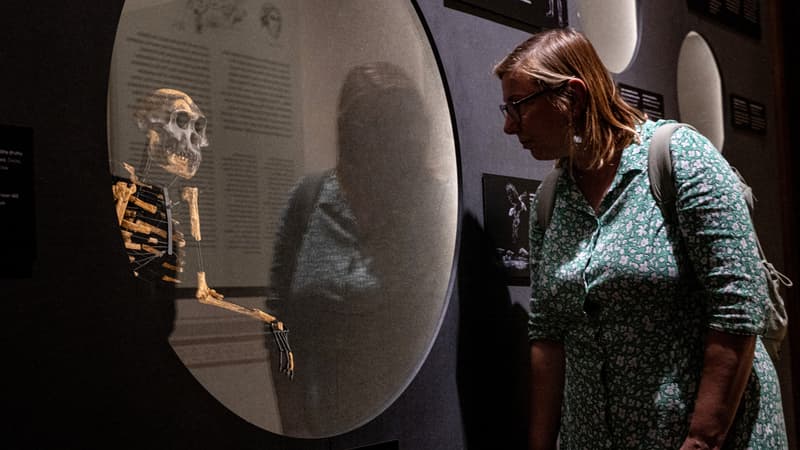Precisely excited, they landed in mid -August in Prague: the most famous Australopitheque Lucy bones, discovered half a century ago in Ethiopia, will be exhibited at the National Museum of Prague as of Monday, August 25.
These 52 dental, skull, pool and femur fragments, 3.18 million years old, “only traveled in the United States,” between 2007 and 2013, remembered the director of the institution, Michal Lukes, when they reached Czech ground.
They are among “the most precious and old paleoanthropological pieces in the world,” he said, welcoming this rare 6 -day loan from the National Museum of Ethiopia.
An “historical” exhibition
Visitors can also discover the almost complete Selam skeleton, a young Australopitheque who died at two and seven months, who would have lived 100,000 years before Lucy. Discovered in 2000, I had never left Ethiopia.
An “historical” exhibition, therefore, according to Addis Abeba, offering “a unique opportunity to see these human fossils.”
It was on November 24, 1974 in the Afar region located in the northeast of the country, that Lucy’s bones were discovered, which made it possible to compose around 40% of the skeleton.
Donald Johanson, who was part of the scientific team also composed of Maurice Taieb, Yves Coppens, Jon Kalb and Raymonde Bonnefille, will be present at the inauguration of the exhibition on Monday, together with Prime Minister Czech, Petr Fiala and the Ethiopian Minister of Tourism, Seamawit Kassa.
First called AL-288-1, this hominid of two sides was baptized in reference to the Beatles song “Lucy in the Sky With Diamonds”, heard by paleontologists during the excavations.
Possibly dead between 11 and 13 years (which is considered an adulthood for this species), which measures less than 1.10 m high and weighs around 29 kg, Lucy usually remains in a room not open to the public in the heart of the Ethiopian capital.
His discovery “revolutionized” scientific research and understanding of our ancestors “,” first due to their exceptional state of conservation, and then because of their age, “explains Abebaw Ayalew Gella, director of the Ethiopian authority for heritage protection.
“An Ethiopia Ambassador”
Like Selam, the older girl in the world, Lucy is “an Ethiopia ambassador, the cradle of humanity,” he gets excited. Dora for a long time as the grandmother of humanity, is now considered as an aunt or a cousin, her direct paternity with man being disputed.
According to a study published in 2016 in Nature magazine, it happened at least a third of its time in the trees where I was sleeping to escape the predators, which would have been fatal since it is “probably” dead after a fall. Since then, many discoveries have returned to the letters, in Ethiopia, South Africa, Kenya, but also in Chad.
Toumaï, considered by certain paleontologists as the first representative of the human line in the apogee of 7 million years, or Ardi, of 4.5 million years, joined Lucy in the prehistoric pantheon.
Source: BFM TV


